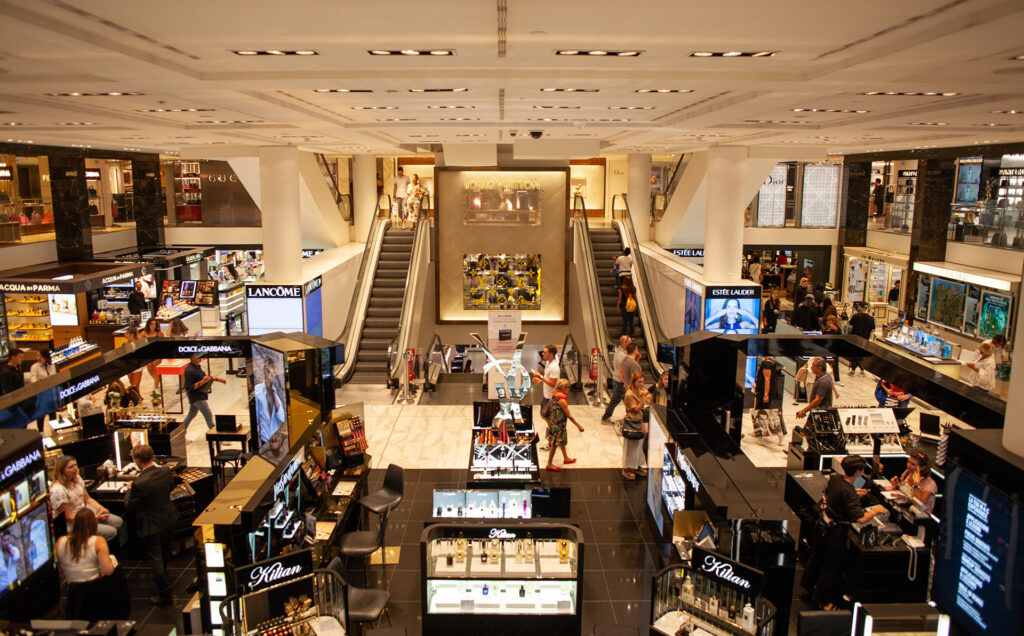
The Merchandising is a marketing technique that includes a set of actions or activities used to present and promote products and/or services at the point of sale. Its main goal is the presentation of the product to the ShopperIt’s about nfluencing the customer to increase his/her shopping impulse and attain an increase in sales.
When we talk about Merchandising, we mean a strategy based on displaying the products and/or services in the right place, with the purpose of increasing the number of visits and sales. This includes store design, the products que elige vender, cómo los organiza e incluso su estrategia de precios. Los minoristas utilizan la comercialización en sus tiendas para cultivar su imagen, mejorar la experiencia del cliente e impulsar las ventas.
“82% of brands think they are offering an optimal experience, while 72% of consumers have found inconsistencies in the same experience in some of the contact points”.1
What types of Merchandising are there?
There are several types of merchandising, depending on what the specific goals are. Companies may use one or more of these in order to be effective in their marketing strategies.
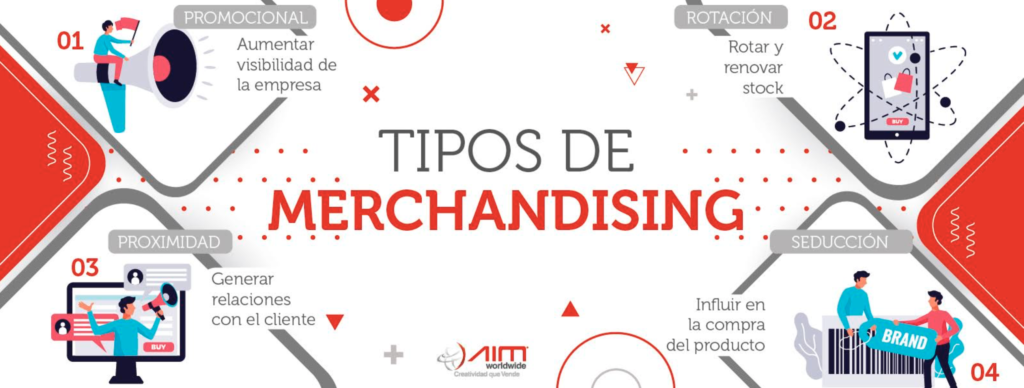
Below, we present what we consider the main ones:
1. Merchandising Promocional
The Promotional merchandising strategies are those that try to have direct influence on Shoppers, through a specific product that typically bears the company’s logo (publicity or promotional items).
The goal of this type of merchandising is to increase the company’s visibility.Some examples of promotional products commonly used are: thermoses, ball pens, USB flash drives, appointment books, etc., the goal of which is to increase brand remembrance and that potential customers can contact the company when they need to. These types of articles can be given directly at fairs/activations or as a present or incentive in the purchase of products or services “hook items”, etc.
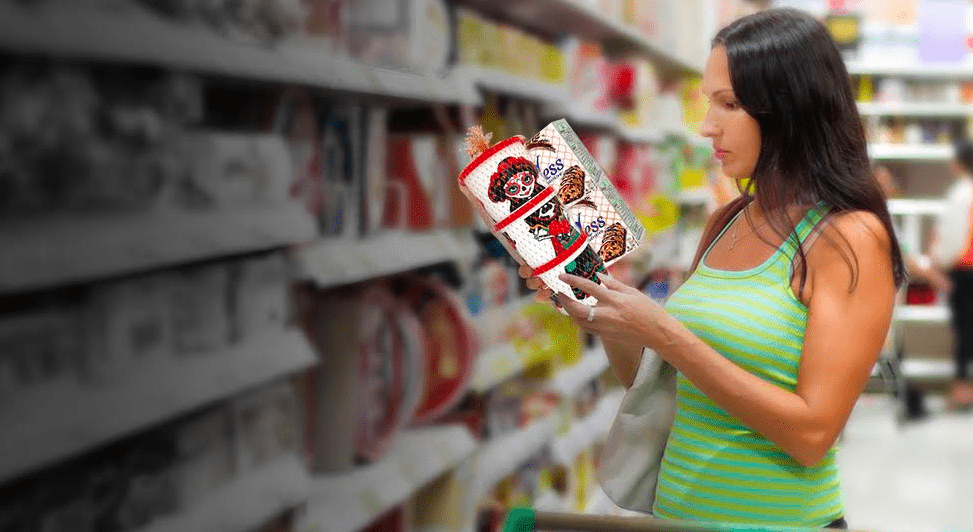
2.Rotation Merchandising
This strategy consists on the use of merchandising to rotate and renew the stock of the company. To do so, we place the product strategically in places that will have more visibility within the point of sale. In physical stores, there are strategic places like headers or front side of aisles, and in online stores, at the homepage or the category page in a highlighted way.
At times, we can also call it “visual merchandising”, ya que se trata de una técnica para influir en la venta de un producto, que no resulta invasiva, ya que no se realiza ninguna técnica comercial específica de acercamiento al cliente, pero sí se coloca el producto en una posición en la que el Shopper can see its highlighted location

3.Proximity Merchandising
This strategy is focused on creating spaces that allow a relation with customers; for example, attendance to fairs or events, in which you may have an exhibition stand or carry out a product demonstration.
The goal of this type of merchandising is to generate relations with customers facilitate communication and better understand our target.
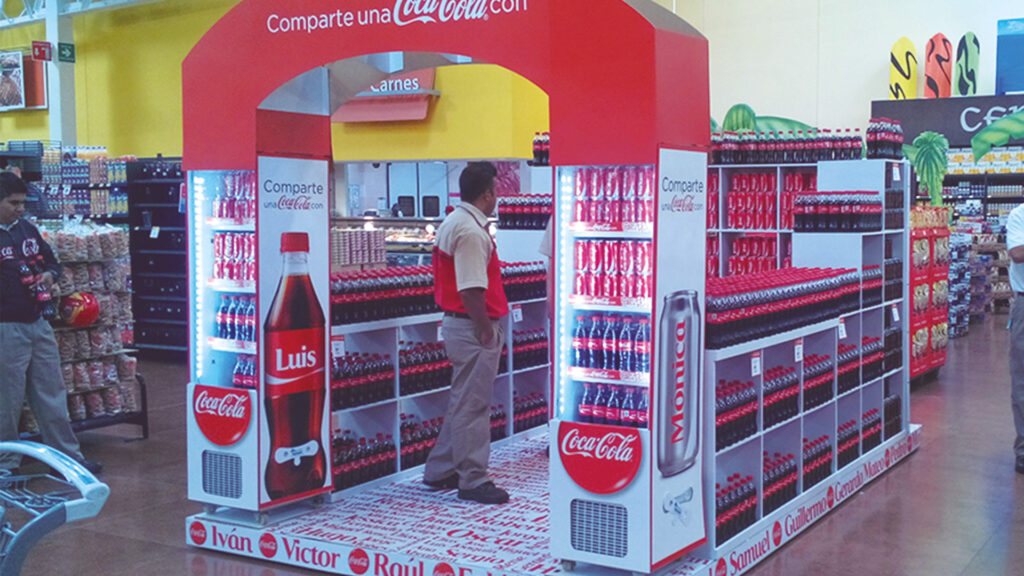
4.Merchandising de Seducción
the commercialization strategies includes different elements that overlap to create a complete merchandising image on your storefronts.
It consists of creating a particular experience at the point of sale to generate a positive mood on the customer, influencing in the purchase of the product. For that, we take into consideration esthetic factors, like decoration or lighting, but also human factors, like the vendors’ sales techniques .
An example of seduction merchandising is that where we invite the customer to go in the store and try a product for free as a starting point to establish a commercial relationship.
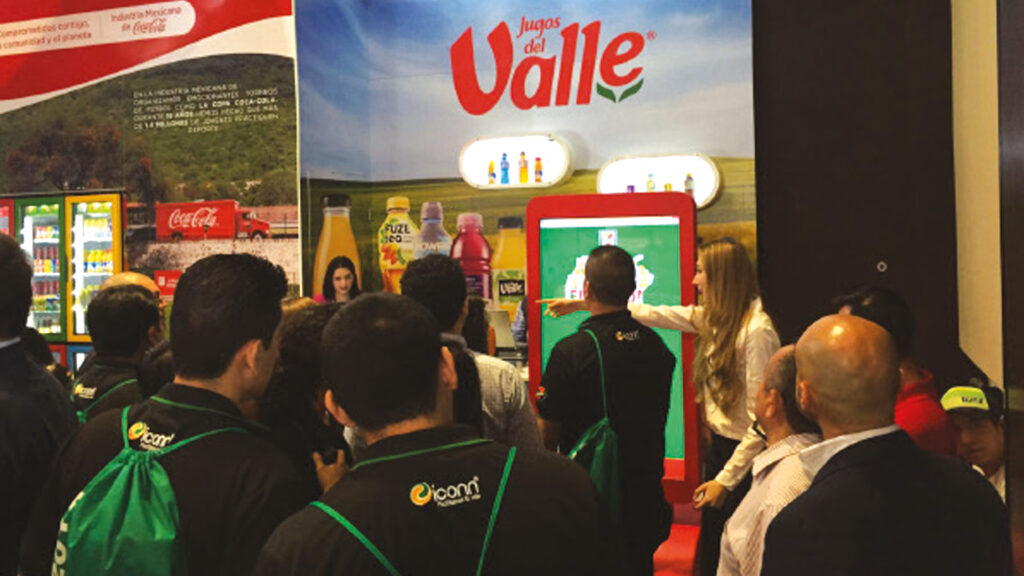
Elements of Merchandising
These elements include:
“Según un estudio publicado por Point of Purchase Advertising Institute - POPAI(2018), “el 82% de las decisiones de compra se hacen en el punto de venta”.2
What are the benefits of Merchandising?
Well-stocked shelves, clear pricing, neat displays, and smart merchandising strategies promote increased customer engagement and product visibility, which will help drive sales. Here are some specific ways marketing benefits your bottom line.
1. Segmentación concreta: The target is very well defined.
2.Se usa la publicidad más barata: Mouth to mouth marketing.
3.Fomento de ventas: The brand has a wider reach.
4.Offering experiences to the shopper: Products, when placed correctly, do not only sell, but also offer the customer an experience .
5.Es un reflejo visual: Correct placing speaks not only of the product, but also of the store.
In physical stores various techniques are used to help the Shopper have an experience (aromas, music, ambiance, product testing) hand in hand with the buyers, that is, unknowingly they receive direct advice. A physical store, can attract its customers and close a sale through some tactics that in an on-line store would be very difficult to apply.
“Según el informe Next generation in-store technology: Where do shoppers and retailers stand? Del Reino Unido, un 94% de los consumidores, visitan las tienda físicas mientras que solo el 6%, realiza compras en línea”.
Conclusion:
Merchandising encompasses a set of techniques that take the product to the hands of the shopper obtaining a benefit from the investment made in the store. This means that, as long as there are sales with the goal of obtaining some benefits, merchandising is present. It is also important to highlight that the purpose of merchandising techniques is to defend your standpoint and constantly influence the target, even if the vendor is not in front of them.
Má información en fábrica exhibidores.



